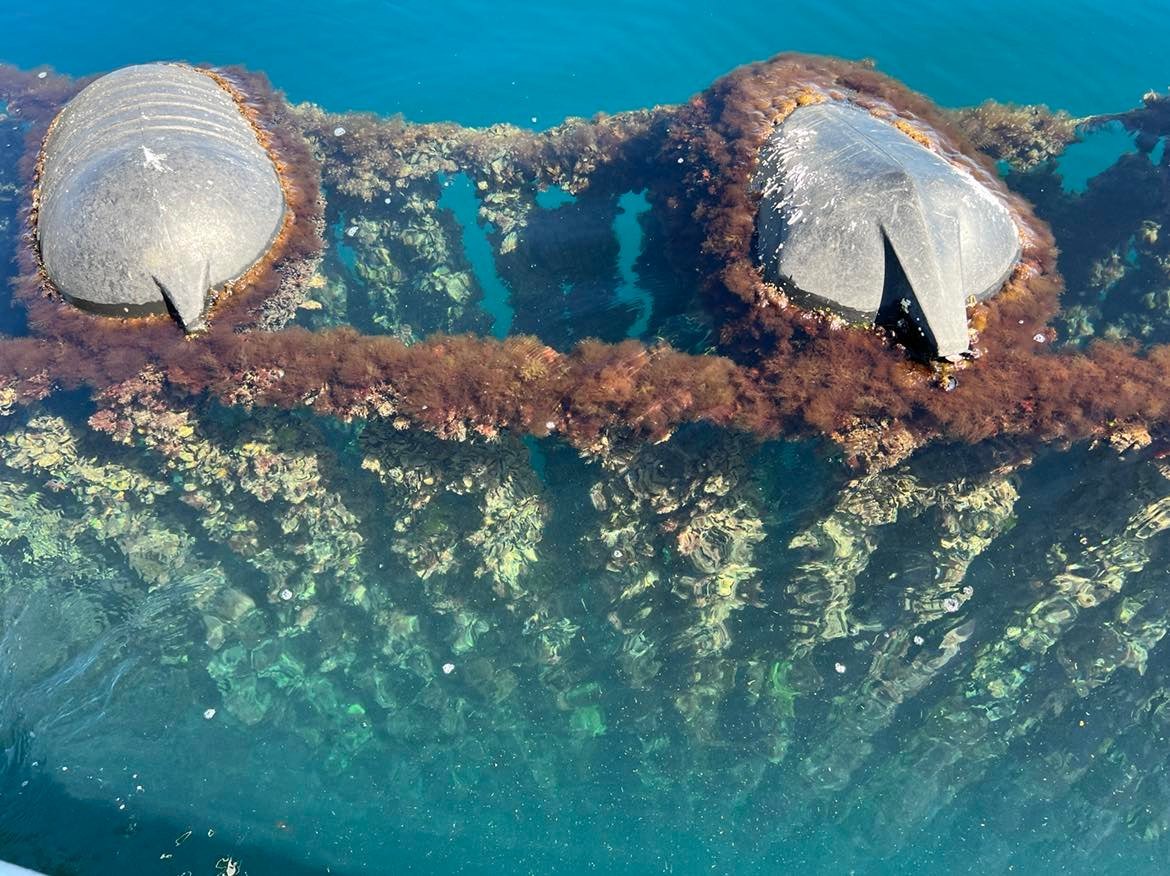
Marine Biosecurity News
Be informed with the latest news and resources about marine pests and boat maintenance from Northland to Hawke’s Bay.

Real-life story: boat owner discovers new caulerpa location
A cruiser was surprised - and worried - when he pulled up a substantial amount of seaweed that looked like it could be exotic caulerpa in Paradise Bay at Urupukapuka.

National survey of moored boat owners released
Last year over 700 boat owners who have boats moored in marinas around Aotearoa New Zealand responded to a survey about hull cleaning and the great news is that most were concerned about the spread of marine pests, the harm they can do, and felt that boaters have responsibility to play their part.

More fast successful Mediterranean fanworm responses
Around the country, successful responses to detections of Mediterranean fanworm, an Unwanted Organism and an Notifiable Organism under the Biosecurity Act 1993, underline the importance of vigilant surveillance and prompt response.

Matt Watson tells the marine biosecurity story
Kiwi fishing personality Matt Watson is sharing the marine biosecurity “protect our paradise” message with his viewers this autumn.

Marine Biosecurity research boosted
Following the conclusion of the highly successful Marine Biosecurity Toolbox research programme, Cawthron Institute has received funding from the 2024 MBIE Endeavour Fund to tackle the next step in the biosecurity continuum: eradication and management.

Aquaculture New Zealand scores an A+ for new biosecurity standards
Biosecurity is a top priority for the aquaculture industry, as farmers have seen first-hand the consequences of marine invasions.

New technology: ultrasonic Innovation
Hull Shield ultrasonic antifouling systems use high-frequency sound waves to reduce fouling on boats and other submerged surfaces.

Parasite found in Mahurangi mullet
Caution for yellow-eyed mullet catchers in Mahurangi River

Got a marine biosecurity question? We’re here to help!

‘Thumb splitting’ pest shrimp found in Tauranga Harbour
The Japanese mantis shrimp (Oratosquilla oratoria) has been detected for the first time in the Bay of Plenty region.

How New Zealand’s newest marina is supporting marine biosecurity
“It can be confronting to find out that your boat is not compliant but all boats get fouled so there is no blame - however if there is a pest species onboard it’s important that they know before they head to somewhere like the Mercs or Great Barrier and maybe take the pest with them”

What the Undaria? A look at an intriguing marine pest species
Also known as wakame and Asian kelp, Undaria is a species of kelp native to the cold temperate coasts of the northwest Pacific Ocean, and considered to be one of the most invasive marine algae species in the world.

What’s your Rank? The Level of Fouling system explained
The Level of Fouling scale (LoF) ranks hulls across six categories, based on the amount of fouling you can see on a vessel’s submerged surfaces.

‘Hull grooming’ - a new mindset for owners of moored boats
If your boat lives full time in the water, you might have heard the term ‘hull grooming’ - an approach that’s catching on within the maritime community.

Restrictions in place for parts of Waiheke Island; new location found near Kawau
New biosecurity controls are in place over an area of Waiheke Island waters to prevent the spread of the invasive seaweed exotic caulerpa.
No more exotic caulerpa found at Leigh Harbour
Great news for residents of Leigh and Omaha. Since the discovery of a small clump of exotic caulerpa seaweed in Omaha Bay this winter during Auckland Council’s routine dive surveillance, no more has been found in the harbour.

All eyes on Auckland this January
From SailGP to the Moana Ocean Festival, Auckland is a hot spot for maritime events this summer. 18 Auckland Council marine biosecurity ambassadors will be out and about.

Coming at us!
We are stoked to have world cruisers back and it’s good to know that they have had to meet strict criteria with regards to biofouling even before they arrive at our borders. And once they get here, they need to meet all the same regional requirements of the Kiwi domestic fleet.

How to report marine pest sightings
From Northland all the way down to Hawke’ Bay, our regions include a vast amount of coastline. As fantastic as our surveillance teams are, they can’t get around it all. We need your help!

What happens to marine pest populations when the ocean gets warmer?
Warmer waters mean change for our marine ecosystems. We spoke with senior marine biosecurity adviser Dimitri Collella from Auckland Council about what this could mean for marine pest species in the North Island.
